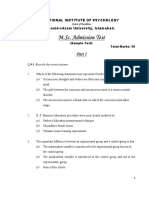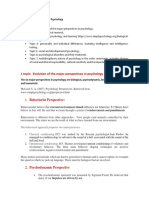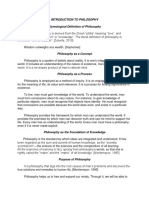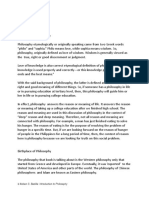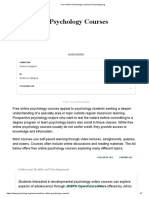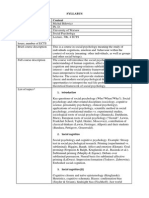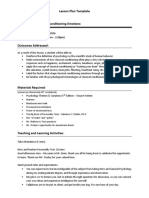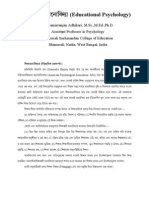100% found this document useful (1 vote)
851 views10 pagesCognitive Psychology Overview
Cognitive psychology studies mental processes like memory, perception, thinking, and language. The cognitive approach views these processes as analogous to how a computer works, with information input, stored, and output by the brain. However, this view is reductionist and ignores other influences on cognition like experience and culture. Studies demonstrate how factors like leading questions can influence memory, and that theory of mind is important for understanding others and can be impaired in autism. While useful, the cognitive approach relies on inference and self-report, though brain imaging now provides more direct evidence of cognitive processes.
Uploaded by
jocelyno0Copyright
© Attribution Non-Commercial (BY-NC)
We take content rights seriously. If you suspect this is your content, claim it here.
Available Formats
Download as DOCX, PDF, TXT or read online on Scribd
100% found this document useful (1 vote)
851 views10 pagesCognitive Psychology Overview
Cognitive psychology studies mental processes like memory, perception, thinking, and language. The cognitive approach views these processes as analogous to how a computer works, with information input, stored, and output by the brain. However, this view is reductionist and ignores other influences on cognition like experience and culture. Studies demonstrate how factors like leading questions can influence memory, and that theory of mind is important for understanding others and can be impaired in autism. While useful, the cognitive approach relies on inference and self-report, though brain imaging now provides more direct evidence of cognitive processes.
Uploaded by
jocelyno0Copyright
© Attribution Non-Commercial (BY-NC)
We take content rights seriously. If you suspect this is your content, claim it here.
Available Formats
Download as DOCX, PDF, TXT or read online on Scribd
/ 10



